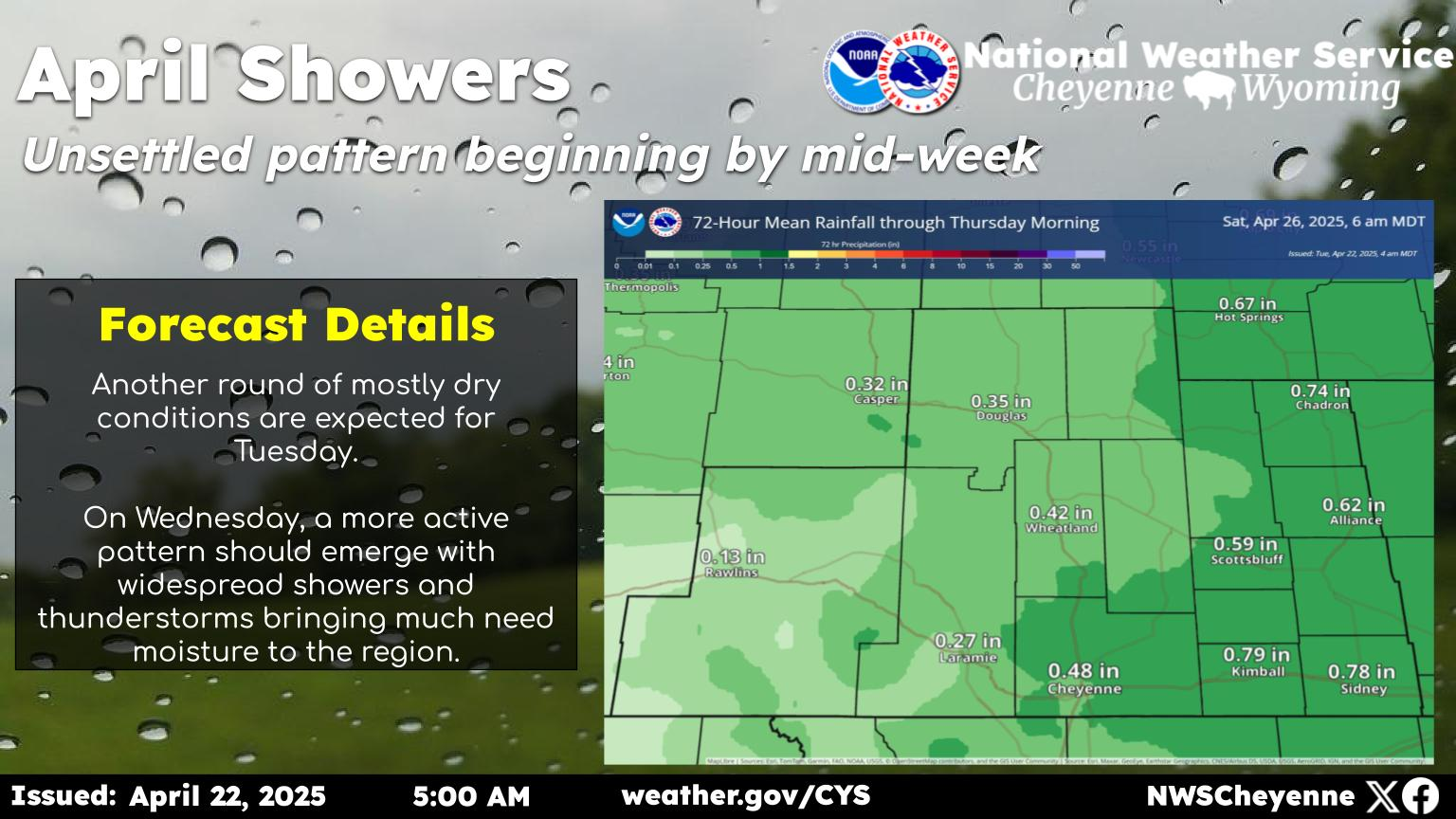
Golfball Size Hail, 70 MPH Winds, Flooding Possible Tuesday In SE Wyoming
The Cheyenne Office of the National Weather Service says southeast Wyoming and the Nebraska Panhandle could see strong winds, frequent lightning, large hail, heavy rain, and flash flooding on Tuesday [July 13].

The agency issued a weather statement early Tuesday which included the following:
Here are the current weather event impact highlights:
- High based dry thunderstorms are expected to develop across Carbon County after 11 AM today, spreading east through the afternoon and eventually into the Nebraska Panhandle this evening.
- Storms will mainly be dry across Carbon and Albany Counties which could lead to multiple fire starts. A Red Flag Warning for Dry Lightning is in effect 11 AM to 6 PM today.
- As the storms get into richer air east of the Laramie Range, hazards turn to large hail and damaging downburst winds. Heavy rainfall leading to localized flash flooding possible across Converse/Niobrara Counties in east central Wyoming as well as northern Sioux and Dawes Counties in the Nebraska Panhandle.
Storms may continue through late evening tonight in the Nebraska Panhandle
Outlook: 2PM to 9PM Southeast Wyoming. 6PM to 12AM Nebraska Panhandle. Large hail up golf ball size. Damaging downburst winds to 70 mph. Dry Lightning for Carbon and Albany Counties 11 AM to 6 PM Today that may lead to multiple fire starts.. Situation Report Tuesday, July 13, 2021 4:00 AM Frequent cloud-to-ground lightning is expected with all thunderstorms. Medium-to-High risk for hail. Severe hail up to golf ball size in southeast Wyoming and the western Nebraska Panhandle. Medium-to-high risk for damaging downburst winds up to 70 MPH.

LOOK: The most expensive weather and climate disasters in recent decades
More From KGAB









